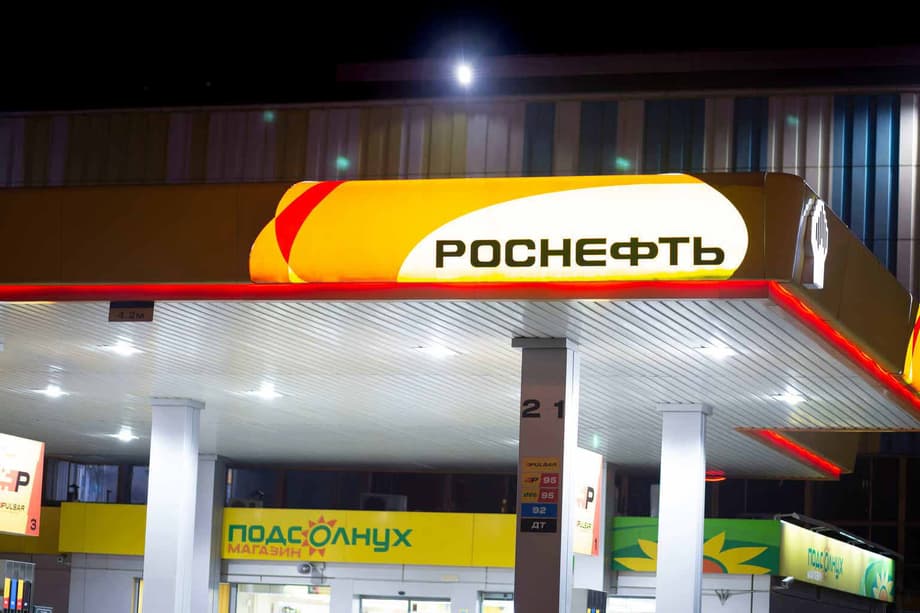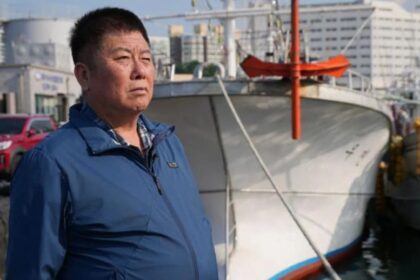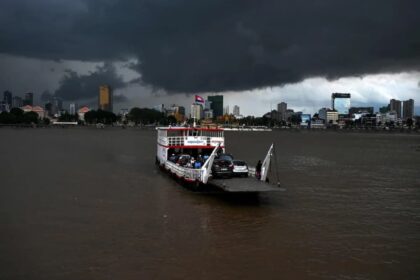Why new US sanctions on Rosneft and Lukoil matter now
The United States has imposed sweeping sanctions on Russia’s two largest oil companies, Rosneft and Lukoil, a move designed to cut Moscow’s wartime revenue while minimizing the risk of an immediate supply shock. Energy markets reacted fast. Crude prices jumped about 5 percent and fuel benchmarks rallied as buyers in Asia, the top market for Russian oil since 2022, paused purchases and reassessed legal exposure. The approach marks a break from the price cap policy introduced by Group of Seven countries in late 2022. Instead of allowing Russian barrels to move if sold below a set threshold, the new US restrictions block transactions tied to Rosneft and Lukoil regardless of price.
- Why new US sanctions on Rosneft and Lukoil matter now
- What the measures cover and how they work
- How Asian buyers are responding
- Price shock across crude and fuels
- Can Russia reroute exports through the shadow fleet
- OPEC and other suppliers step in
- Risks for banks, traders, and shippers
- Beyond the price cap, what it means for Russian revenue
- Timeline and what to watch
- The Bottom Line
Washington has given companies until November 21 to wind down business. That window aims to prevent sudden cancellations that could push prices sharply higher. Even with the grace period, trade flows are already shifting as banks, shipowners, and refiners weigh the risk of violating US rules. Rosneft and Lukoil together handle a large share of Russia’s seaborne crude exports. In recent months, China has been importing around 2 million barrels a day of Russian crude and India about 1.6 million barrels a day, much of it arriving by sea. Those barrels are now under closer scrutiny.
US officials framed the action as a direct response to continued fighting in Ukraine and a lack of progress in talks. US Treasury Secretary Scott Bessent said the measures were necessary because of President Vladimir Putin’s refusal to end the war. He argued that Rosneft and Lukoil fund the Kremlin’s war effort.
Scott Bessent, the US Treasury Secretary, said the sanctions target Russia’s two largest oil companies that fund the Kremlin’s war machine and that the United States is prepared to take further action.
At the White House, President Donald Trump described the sanctions as a major step and hinted that they could be lifted if negotiations advance.
President Donald Trump said, “These are very big ones that are against their two big oil companies, and we hope that they will not be on for long. We hope that the war will be settled.”
What the measures cover and how they work
The sanctions block US persons and US companies from dealing with Rosneft and Lukoil, along with dozens of subsidiaries. Any assets under US jurisdiction are frozen. The restrictions extend to key elements of the oil trade, including financing, shipping services, and insurance. Even when cargoes are traded outside the United States, transactions that touch US dollars or US-linked financial infrastructure can be captured by the rules. The wind down period until November 21 gives counterparties time to terminate or novate contracts.
Foreign firms face added risk. The Treasury warned that secondary sanctions may be considered against foreign financial institutions that facilitate transactions for Rosneft or Lukoil. That possibility targets banks and service providers in countries that have remained active in Russian oil trade. The move brings Washington closer to measures adopted by European partners. The European Union has approved a fresh sanctions package that includes a staged ban on Russian liquefied natural gas imports and new listings for vessels tied to Russia’s shadow shipping network. The United Kingdom also announced similar actions against the two companies in recent days.
How Asian buyers are responding
Refiners in Asia, which became Russia’s most important customers after Europe cut purchases, are now reassessing exposure to Rosneft and Lukoil. Companies in China and India have paused new seaborne deals tied to the sanctioned firms while they review shipping, payment, and compliance procedures. The immediate concern is access to trade finance, particularly letters of credit from banks with links to the United States and Europe.
China
China’s state oil majors have put new seaborne purchases connected to Rosneft and Lukoil on hold. That pause is driven by concern that dealings could affect access to US dollar clearing or draw penalties if Washington enforces secondary sanctions. Some flows remain insulated. About 900,000 barrels a day of Russian crude enter China through pipelines under existing agreements with Rosneft, and those deliveries are outside the tanker trade. China’s independent refiners may also look for ways to use intermediaries, although doing so increases costs and legal risks.
Chinese firms have built large strategic and commercial inventories, which helps cushion near term supply disruptions. Beijing has criticized unilateral sanctions and opposed European listings targeting Chinese energy entities. The latest EU package adds two Chinese refining companies and a trading arm linked to PetroChina to its Russia sanctions list. That move, together with US measures, raises the compliance risk for Chinese banks and small commodity traders that have been active in Russian cargoes.
India
India emerged as the largest buyer of discounted Russian seaborne crude after 2022. State run refiners and private players have now started reviewing all documentation to ensure supplies are not sourced directly from Rosneft or Lukoil or any named subsidiary. Market participants say Reliance Industries, a top buyer of Russian barrels, is preparing to reduce or pause imports of grades linked to the sanctioned firms. If purchases fall, Indian refiners are expected to seek more cargoes from the Middle East and the United States.
Rosneft owns nearly half of Nayara Energy, which operates the large Vadinar refinery in Gujarat. That corporate link could create new challenges for product exports and access to trade finance if counterparties conclude that transactions are indirectly exposed to the sanctions. India’s government has tried to balance cheap energy with diplomatic relations, and the sanctions may also feature in ongoing trade discussions with Washington.
Price shock across crude and fuels
Crude benchmarks jumped after the announcement. Brent rose about 5 percent to around 66 dollars a barrel and US West Texas Intermediate (WTI) climbed by a similar rate to about 62 dollars. These were the biggest daily percentage gains in weeks and lifted both contracts to their highest levels since early October. Analysts said the move could tip the market into deficit next year if a significant share of Russian exports is sidelined for a sustained period.
Refined products rallied even more. US diesel futures surged almost 7 percent and the diesel crack spread hit the highest level since early 2024, signaling tighter margins for transport and heating fuels. In Asia, gasoline and naphtha prices also jumped as traders priced in tighter supplies. The stock market reaction was mixed. Shares of large international oil companies rose, helping push London’s FTSE 100 to a record high, while Russian equity indices fell as investors assessed a deeper squeeze on its energy sector.
Some industry voices called the move a major escalation.
Jorge Leon, head of geopolitical analysis at Rystad Energy, said the sanctions represent a significant and unprecedented escalation in Washington’s pressure campaign against Moscow and that the sharp rise in oil prices underscores market fears that Russian crude exports could fall sharply.
Can Russia reroute exports through the shadow fleet
Russia has built a large network of older tankers with opaque ownership to move oil without relying on Western insurance or maritime services. This shadow fleet tends to use complex shipping tactics, including ship to ship transfers and rebranding of cargoes, to obscure origin. The network kept much of Russia’s crude on the water after 2022 and could again help redirect some barrels away from buyers that step back. Each additional workaround, however, raises transport costs, increases voyage times, and adds legal uncertainty for buyers and banks.
European authorities are expanding efforts to disrupt that trade. The latest EU package lists more vessels suspected of sanction evasion, increasing the number of ships that insurers and port authorities scrutinize. Even with stricter oversight, not all flows will stop. Pipeline deliveries into China are outside the maritime web and will continue unless government policy changes. Russian sellers may also try to route barrels through lesser known intermediaries or via traders with minimal Western exposure. That lowers net revenue and could gradually reduce petroleum taxes paid to the Russian budget, which is a core objective of the sanctions strategy.
OPEC and other suppliers step in
Spare capacity in the Middle East is the market’s main buffer if Russian flows drop. Saudi Arabia holds the largest cushion and has flexibility to raise output if policy allows. OPEC ministers signaled that the group could adjust production to stabilize supply. A Gulf official suggested that a coordinated increase is possible if market tightness persists and price spikes threaten demand.
Kuwait’s oil minister said OPEC would be ready to offset any shortage in the market by rolling back output cuts.
Supply from the United States is another swing factor. US production reached record levels this year, and exporters can send more light crude to Asia if price spreads open. Some of that adjustment is already visible in spot markets, where refiners are bidding for non sanctioned barrels to cover near term needs. The ability of OPEC to respond will be a key subject when US and Saudi officials meet in November.
Risks for banks, traders, and shippers
The sanctions bring heightened legal risk to any company that touches a transaction involving Rosneft or Lukoil. Letters of credit issued by banks with US ties are likely to exclude cargoes linked to the listed firms. Even if oil is sold in other currencies, many transactions require some connection to US dollar clearing or global reinsurers, which exposes banks and insurers to penalties. This is the core pressure point behind the sanctions, as it aims to restrict the financial plumbing that makes oil trade possible.
Shipping companies face a similar calculation. Vessels that load Russian cargoes connected to the sanctioned firms may lose access to ports or services, and insurance may be voided if owners breach sanctions. The EU’s addition of more tankers to its prohibited list increases the chance that ships carrying Russian oil encounter delays or denial at key transit points. For commodity traders, the cost of compliance has risen. Verifying beneficial ownership, tracing cargo lineage, and proving that no listed entity is involved now requires deeper due diligence and careful documentation.
Beyond the price cap, what it means for Russian revenue
The G7 price cap allowed oil to keep moving if sold below 60 dollars a barrel, provided Western services were used. That system was designed to keep barrels on the market while lowering Russia’s earnings per barrel. The new US policy takes a different tack. It targets the companies at the center of Russia’s export machine, cutting them off from US business regardless of price. The expectation is that this will force Russian sellers to rely more heavily on non Western shipping, financing, and traders, raising costs and lowering netbacks.
How much revenue declines depends on enforcement and the response of buyers. If India and China reduce purchases for a sustained period, and if banks and shipowners avoid transactions with listed entities, a meaningful share of Russian oil could be stranded or delayed. Some analysts argue that higher global prices could offset lost volumes for Moscow, at least in the short run, particularly if OPEC does not raise output quickly. Others contend that as discounts widen and logistics costs rise, Russia’s net income per barrel will fall even if headline crude prices are higher.
Timeline and what to watch
The immediate focus is the wind down period through November 21. Many buyers will let existing deals expire and avoid new Rosneft or Lukoil cargoes until legal guidance is clearer. Watch for signs that Indian state refiners cancel or defer tenders, and for any evidence that Chinese independent refiners resume purchases through intermediaries. Traders are also watching how much pipeline oil to China is delivered and whether those flows increase to compensate for reduced seaborne shipments.
Policy coordination will shape the next steps. US officials have signaled that more actions are possible, including penalties for foreign banks that facilitate transactions with the sanctioned firms. European measures add to the squeeze by targeting the shipping network and setting a schedule to phase out LNG imports from Russia. Diplomatic outreach is underway. US leaders plan talks with Saudi Arabia on spare capacity and with China and India on energy trade, including discussions at regional summits.
Ukraine praised the move and called for sustained pressure.
President Volodymyr Zelensky said the sanctions were a good signal and that a ceasefire is possible if more pressure is applied to Russia.
Russia dismissed the measures and warned that replacing its oil will not be quick.
President Vladimir Putin said it will take time for the global market to replace Russian oil and described the move as an attempt to pressure Russia.
The Bottom Line
- The United States sanctioned Rosneft and Lukoil, blocking US dealings with Russia’s largest oil companies and listing dozens of subsidiaries.
- A wind down period runs until November 21 to avoid sudden disruptions while companies unwind contracts.
- Asian buyers paused new seaborne purchases tied to the listed firms. Chinese state companies halted new deals and Indian refiners are reviewing exposure.
- Brent and WTI jumped about 5 percent. Diesel futures rose more and the diesel crack spread hit the highest level since early 2024.
- OPEC signaled it could offset shortages. Saudi spare capacity is the main buffer, and US exports may rise if price spreads open.
- EU measures complement US action, including a staged ban on Russian LNG and more listings for suspected shadow fleet tankers.
- Secondary sanctions risk for foreign banks increases legal exposure in China, India, and Turkey.
- Pipeline oil to China, roughly 900,000 barrels a day, is not affected by maritime restrictions.
- The effect on Russia’s revenue depends on enforcement and the willingness of Asian buyers and banks to risk US penalties.












